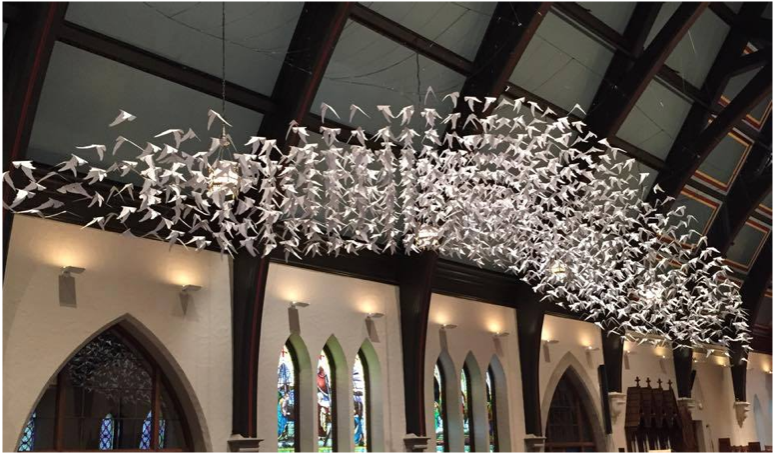This is the weekly bulletin insert from Sermons That Work.
What Is Pentecost?
Next Sunday, May 28, we mark Pentecost, the coming of the Holy Spirit among the apostles and followers of Jesus. Celebrated 50 days after Easter (including the day of Easter itself), the name of the holiday comes from the Greek Pentēkostē, which literally means “the 50th day.”

The events of the day are foretold by Jesus in the first chapter of the Acts of the Apostles, just before his Ascension. While his followers were with the risen Christ, he tells them, “John baptized with water, but you will be baptized with the Holy Spirit not many days from now” (Acts 1:5, NRSV). He goes on to say to them, “You will receive power when the Holy Spirit has come upon you; and you will be my witnesses in Jerusalem, in all Judea and Samaria, and to the ends of the earth” (Acts 1:8).
The followers would not wait long for the promised Spirit. The author of Acts, traditionally believed to be Luke, recounts:
When the day of Pentecost had come, they were all together in one place. And suddenly from heaven there came a sound like the rush of a violent wind, and it filled the entire house where they were sitting. Divided tongues, as of fire, appeared among them, and a tongue rested on each of them. All of them were filled with the Holy Spirit and began to speak in other languages, as the Spirit gave them ability. Now there were devout Jews from every nation under heaven living in Jerusalem. And at this sound the crowd gathered and was bewildered, because each one heard them speaking in the native language of each.
Acts 2:1-6 (NRSV)
We celebrate Pentecost as the inauguration of the Church’s mission in the world. Empowered by the gift of the Holy Spirit, we are to go out into our neighborhoods and the wider world—to Jerusalem, to Judea and Samaria, and to the ends of the earth—witnessing to the risen Christ.
The Day of Pentecost is identified by the Book of Common Prayer as one of the feast days “especially appropriate” for baptism (Book of Common Prayer, p. 312). Because of this, Pentecost is also known as “Whitsun” or “Whitsunday” (“White Sunday”), a term used to describe the white baptismal garments worn by those who were baptized at the Vigil of Pentecost and then worn to church on the Day of Pentecost.
Collect for Pentecost
Almighty God, on this day you opened the way of eternal life to every race and nation by the promised gift of your Holy Spirit: Shed abroad this gift throughout the world by the preaching of the Gospel, that it may reach to the ends of the earth; through Jesus Christ our Lord, who lives and reigns with you, in the unity of the Holy Spirit, one God, for ever and ever. Amen (Book of Common Prayer, p. 227).
Weekly bulletin inserts
This weekly bulletin insert provides information about the history, music, liturgy, mission, and ministry of The Episcopal Church. For more information, please contact us at stw@episcopalchurch.org.

Sermons That Work
For more than 20 years, Sermons That Work, a ministry of The Episcopal Church’s Office of Communication, has provided free sermons, Bible studies, bulletin inserts, and other resources that speak to congregations across the Church. Our writers and readers come from numerous and varied backgrounds, and the resources we provide are used in small house churches, sprawling cathedrals, and everything between.

Church of the Redeemer
Church of the Redeemer: Worshiping God, living in community, and reaching out to the world around us. We are an Episcopal Church serving north King County and south Snohomish County, Washington. As you travel your road, go with friends walking the way of Jesus at Redeemer.
Church of the Redeemer is at 6210 Northeast 181st Street in Kenmore, Washington. The campus is a short distance north of Bothell Way, near the Burke-Gilman Trail. The entrance looks like a gravel driveway. The campus is larger on the inside than it is on the outside. And we managed to hide a large building on the side of a hill that is not easily seen from the street.
The Episcopal Church welcomes you.



